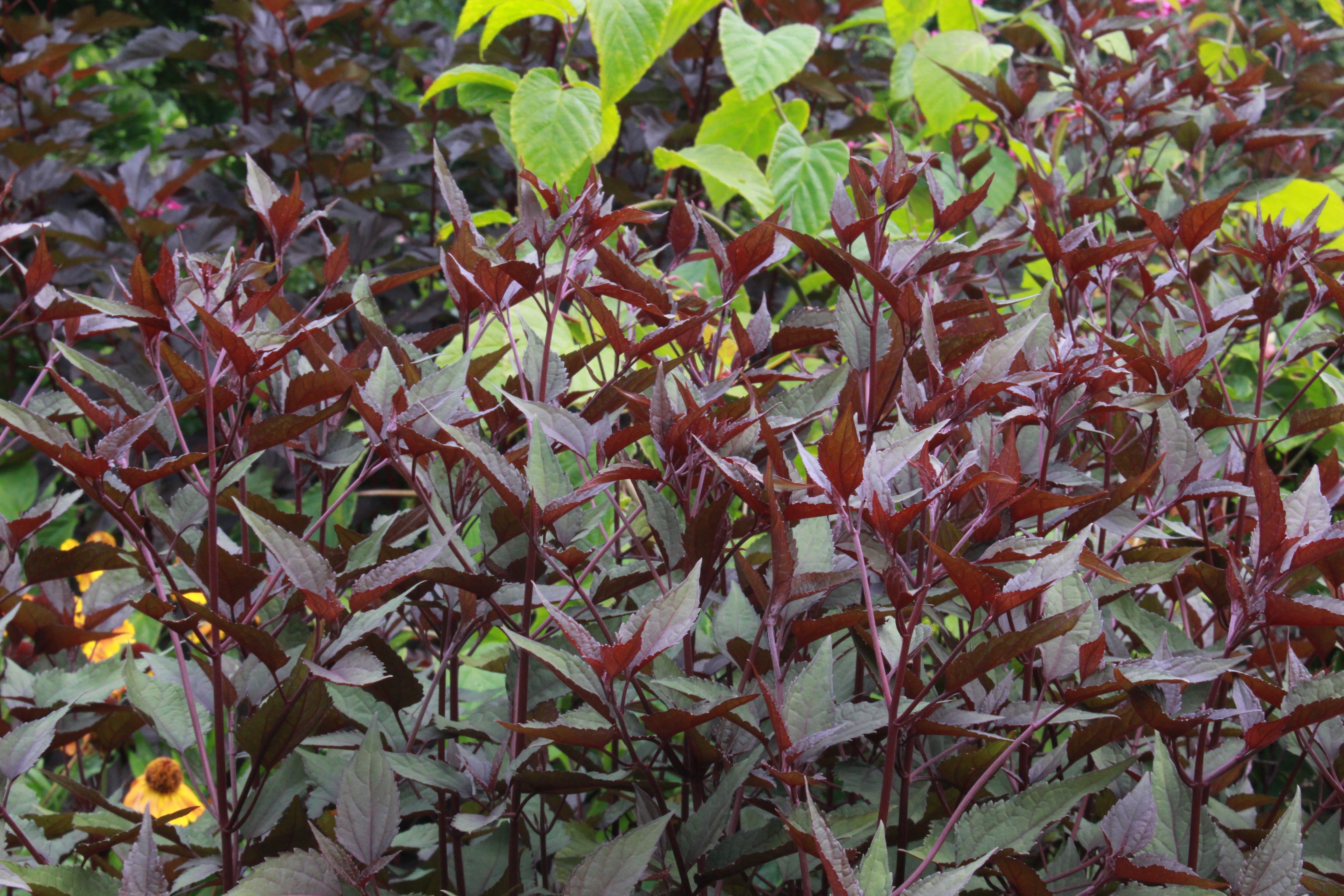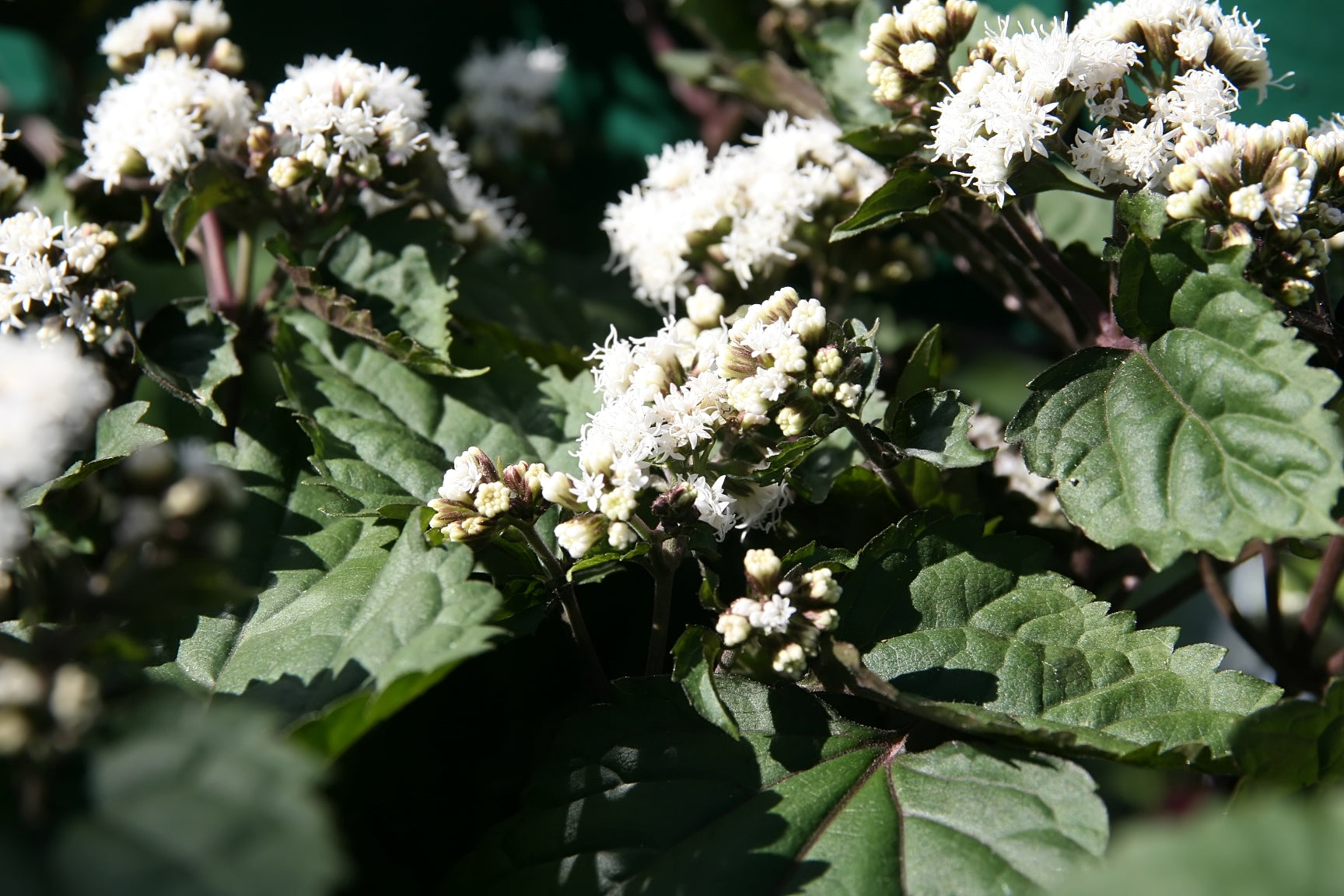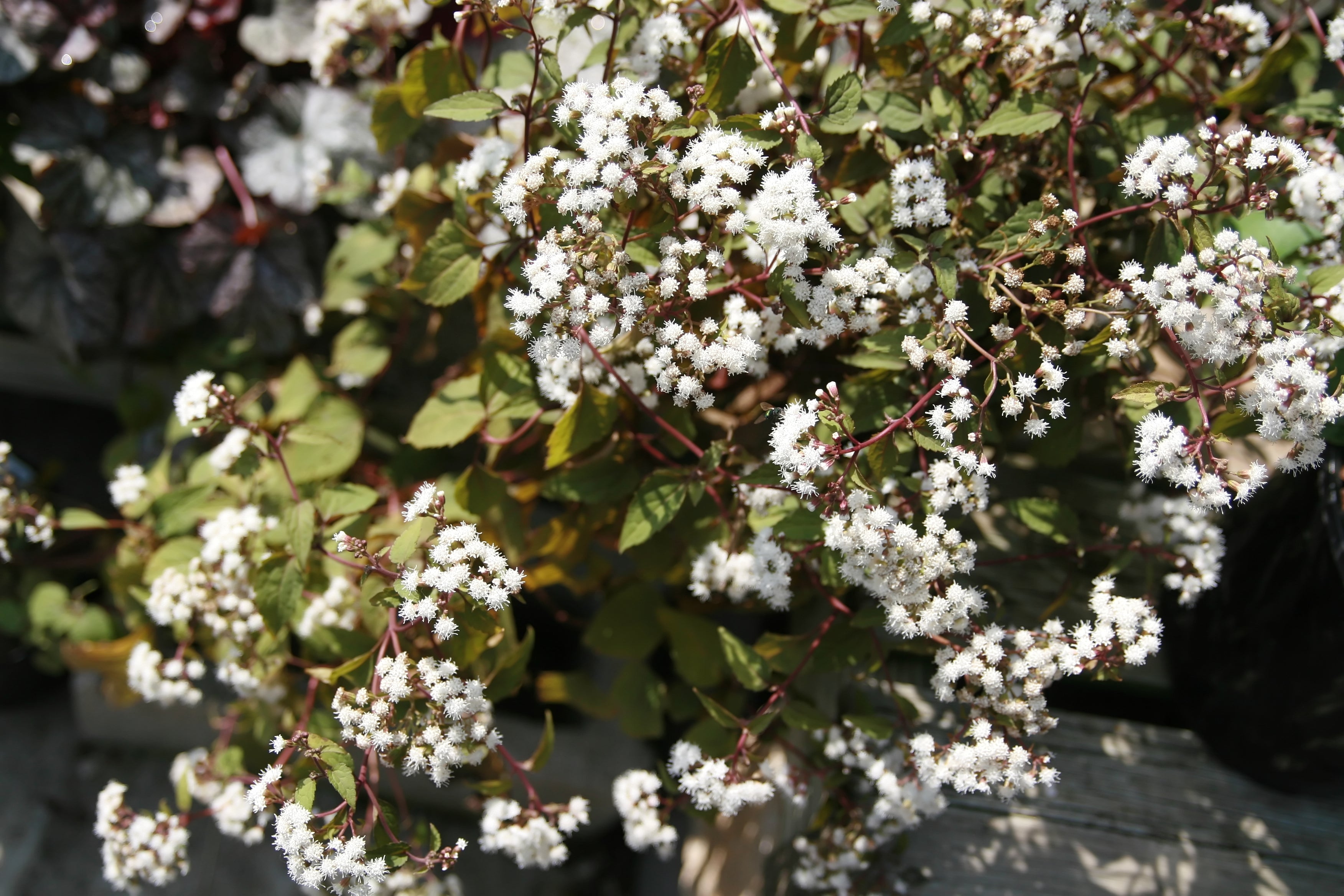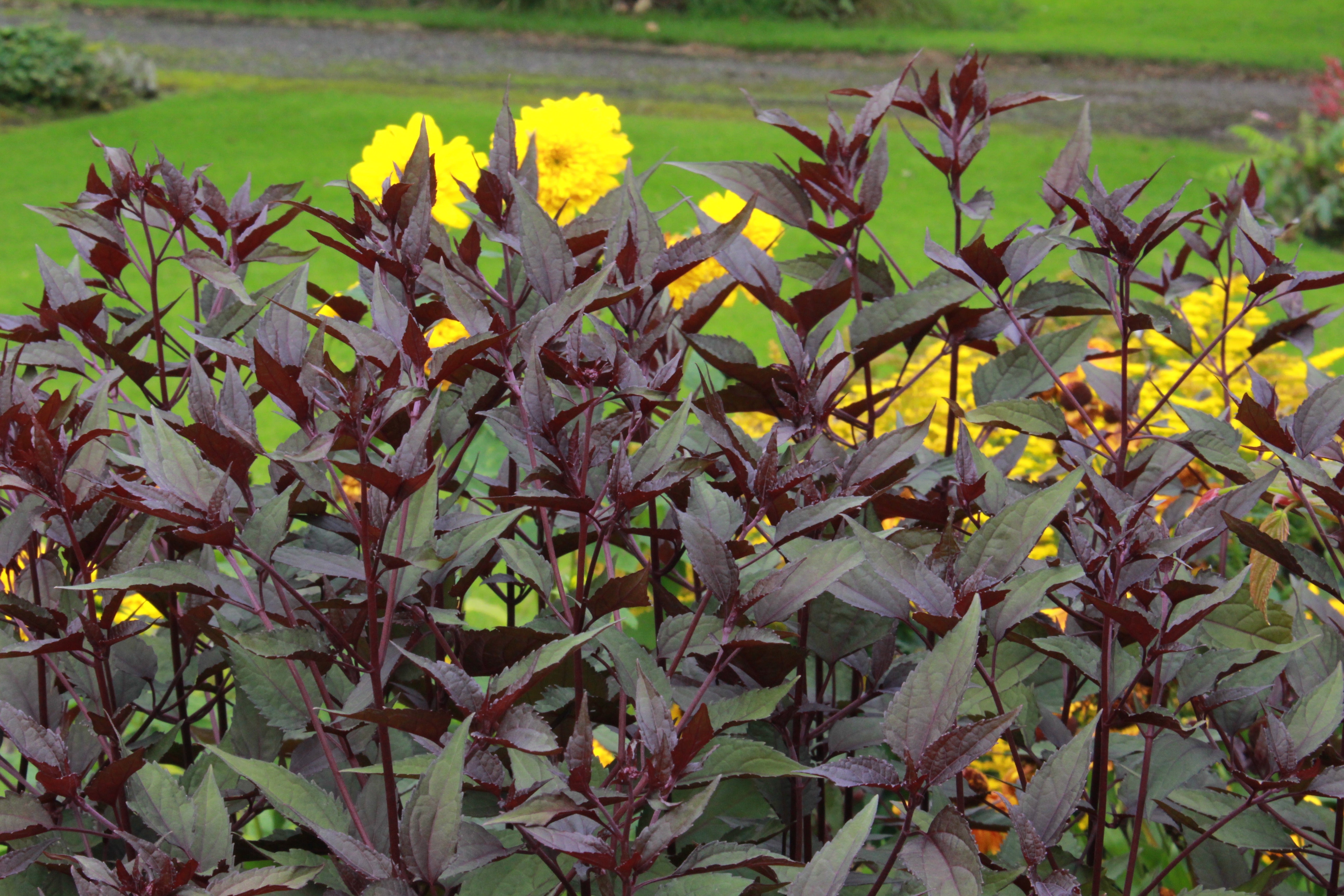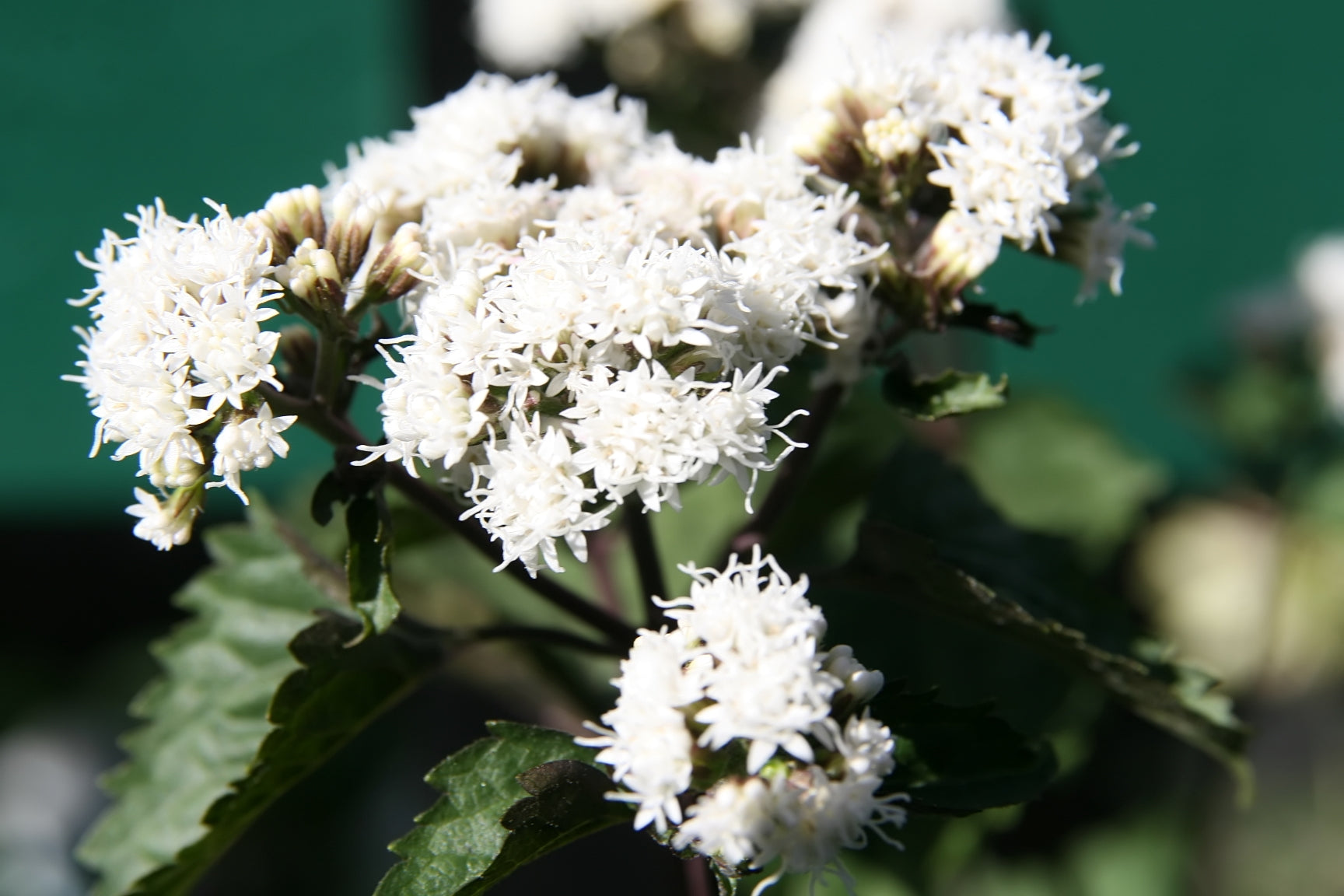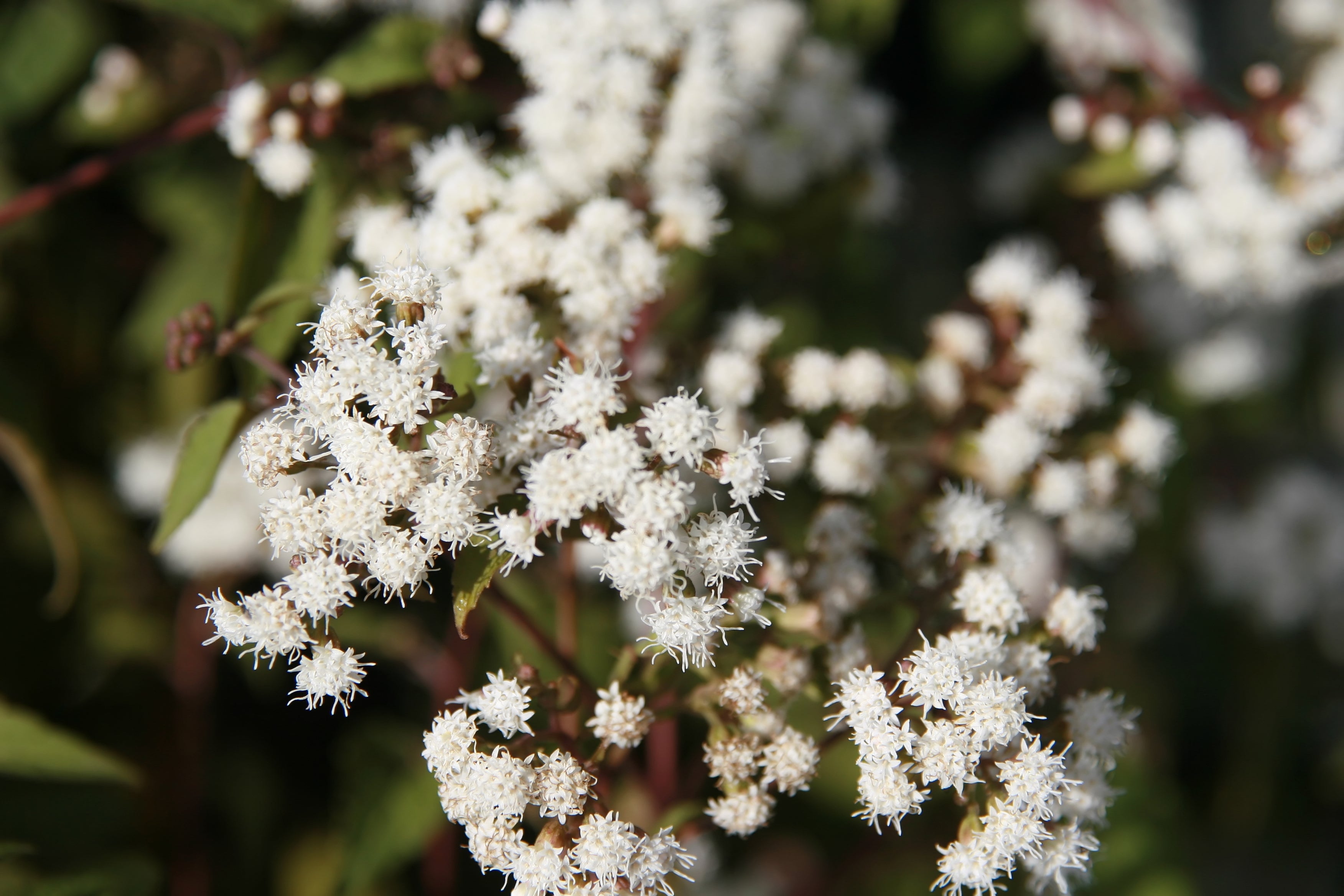Ageratina altissima 'Chocolate'
Approx. 0.5 litre pot
About this cultivar:
Ageratina altissima 'Chocolate' is a mid-height perennial that has fluffly white flowers versus mature dark foliage, perfect for adding contrast to the garden. The dark leaves show their best colour in full sun, but adequate moisture is needed to keep the leaves from scorching. In fact, ‘Chocolate’ thrives in moist soil and partial shade!
Introduced by Mt. Cuba Center of the USA in 1994 this cultivar was selected by Dr. Richard Lighty and descended from a plant found in the early 1970s by Hal Bruce. ‘Chocolate’ was found to have the darkest foliage of many seedlings grown over a ten year period. The s pecific epithet ‘altissima’ means tall or highest (not tall tho!). Great cut flower! Try growing hot colours in front of the dark foliage.
- Position: Full sun, partial shade
- Soil: Almost any soil, grows well in Ballyrobert, like wet soil
- Flowers: July, August, September, Maybe October
- Other features: Grows well in Ballyrobert
- Hardiness: H5 - Hardy in most places throughout the UK even in severe winters (-15 to -10°C), Fully hardy - grows well in Ballyrobert!
- Habit: Clump forming, Columnar or Upright
- Foliage: Deciduous
- Height: 75 - 100cm (2.5 - 3.5 ft)
- Spread: 60 - 90cm (2 - 3 ft)
- Time to full growth: 2 to 5 years
- Plant type: Herbaceous Perennial, bog
- Colour: Green, purple, white
- Goes well with: Echinacea, Rudbeckia, Helenium, Helianthus, Ornamental grasses, Veronicastrum, Roses, Larger Persicaria. Hot colours.
About this genus:
Ageratina is a genus of more than 330 perennials and rounded shrubs commonly called snake root. The genus name Ageratina means "like Ageratum" which in turn comes from from the Greek agēraton ‘that which does not age’. It is one of the many members of the daisy family, Asteraceae.
These plants grow mainly in the warmer and cooler areas of the Americas. Native Americans reportedly used a decoction of the roots as a remedy for snakebite, hence the common name. Settlers who drank milk from cows that fed on this plant often developed the disease called milk sickness! Don’t let your cows eat it then!
The flowers consist of multiple fluffy, red or pinkish-white florets in clusters. They have multiple, much-branched woody stems. The leaves are triangular, serrated, and opposite with a musky scent (which some people don’t like!).
Ageratina used to belong to the genus Eupatorium, but it has been reclassified recently by the powers that be (DNA testing). Thus when we are talking about Ageratina in the garden we might as well be talking about Eupatorium. What does that mean? Good in wet, shady areas, but will tolerate full sun and some dryness. Tough! Deciduous but often provides nice winter structure. For more chat, lookup Eupatorium!
Great with other late flowering perennials such as Echinacea, Rudbeckia, Helenium, Helianthus, Ornamental grasses, Veronicastrum, Roses, Larger Persicaria

